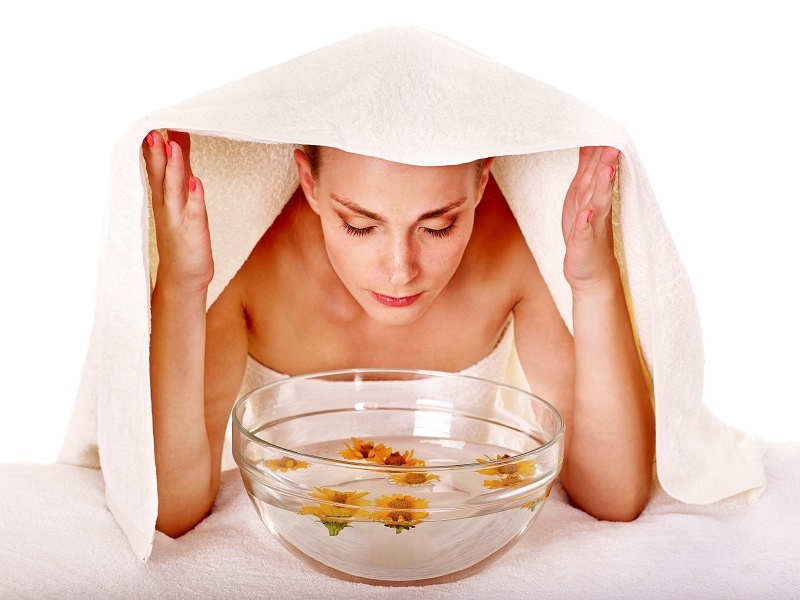Discover How to Keep Your Blooms Fresh and Stunning
Posted on 15/08/2025
Discover How to Keep Your Blooms Fresh and Stunning
Nothing enhances a room like a bouquet of fresh, vibrant flowers. However, ensuring that your beautiful blooms last longer requires more than just water and a vase. In this comprehensive guide, you'll uncover expert-approved tips and tricks to keep your flowers fresh, fragrant, and stunning for days (even weeks) on end.
Why It Matters to Keep Your Flowers Fresh
Flowers have the incredible ability to brighten up spaces and lift moods. Whether they're a gift from a loved one, a special occasion bouquet, or simply a treat for yourself, keeping your blooms fresher for longer allows you to maximize their beauty and value. Fresh flowers can also improve indoor air quality and make your home more welcoming.

The Best Strategies to Maintain Fresh Blooms
Discovering how to make your flowers last longer involves more than just a routine. By understanding the reasons flowers wilt and implementing care best practices, you ensure every bouquet remains fresh, vibrant, and visually stunning.
1. Start With Healthy Flowers
The first step in keeping your blooms looking fresh is selecting the right flowers. Look for:
- Firm stems (no mushy or slimy spots)
- Bright, crisp petals with no brown edges
- Minimal foliage below the water line
- Buds just starting to open for longer display time
2. Trim Stems Correctly
Proper stem preparation is crucial for water absorption. Use a sharp, non-serrated knife or scissors to cut 1-2 inches off each stem at a 45-degree angle. This increases the surface area for water uptake and prevents stems from resting flat at the bottom of the vase. Re-trim stems every few days to refresh their ability to absorb water.
3. Use Fresh, Clean Water Daily
Water is the lifeline for your fresh flowers. Change the water in your vase daily to remove bacteria and provide vital hydration. Always rinse the vase thoroughly before refilling. For best results, use lukewarm water, which flowers absorb more readily than cold.
- Pro-tip: Avoid placing blooms in softened water, as salt can harm delicate petals and foliage.
4. Remove Extra Foliage
Leaves submerged in water decay quickly, fostering bacterial growth that reduces the lifespan of your bouquet. Gently strip any foliage that will rest below the water line before arranging your fresh blooms.
5. Add Flower Food or Homemade Alternatives
Most bouquets come with commercial flower food. This helps nourish blooms and fight bacteria. Didn't get any? Try mixing your own:
- 1 liter of lukewarm water
- 2 tablespoons lemon or lime juice
- 1 tablespoon sugar (nourishes the stems)
- 1/2 teaspoon bleach or vodka (inhibits bacterial growth)
Stir thoroughly and use as your vase solution to prolong the freshness of your flowers.
6. Position Your Blooms Wisely
Find the optimal spot for your gorgeous bouquet. To maximize longevity:
- Keep arrangements away from direct sunlight and sources of heat, such as radiators or electronics.
- Don't place flowers near ripening fruit. Fruits emit ethylene gas, which hastens wilting.
- Choose cool, shaded areas with gentle air circulation for best results.
7. Regularly Remove Wilting Flowers
Removing faded or failing flowers prevents the spread of bacteria and frees up resources for healthier blooms. Check your bouquet daily and take out any wilted stems promptly.
8. Re-Cut Stems and Refresh Water Often
Every 2-3 days, repeat the cutting process for each stem and change the water completely. This minimizes bacteria and keeps your beautiful flowers looking fresh.
Extra Tips to Keep Flowers Fresh and Stunning
- Mist lightly: Spritzing blooms with water can provide vital humidity and slow drying.
- Use aspirin: Some swear by adding a crushed aspirin to vase water to extend bloom life.
- Penny trick: A clean copper coin in the vase acts as a natural anti-bacterial agent.
- Refrigeration: Place your bouquet in the fridge overnight--if space allows--for an extra day or two of freshness.
- Avoid drafts: Keep flowers away from air conditioners, fans, or open windows.
Common Mistakes That Shorten Flower Lifespan
- Neglecting to trim stems--old cuts seal up, preventing absorption.
- Allowing dirty water--stagnant water speeds decay.
- Putting bouquets near fruit--ethylene gas hastens wilting.
- Forgetting to remove submerged leaves--bacteria grows quickly on decomposing greenery.
- Keeping arrangements in warm, sunny spots--this causes faster evaporation and drying.
Special Care for Different Types of Blooms
Roses
Roses are gorgeous, but prone to drooping if not cared for correctly. When preparing, remove foliage below water line and always recut stems underwater to prevent air bubbles. Use a clean vase and provide flower food for maximum longevity.
Tulips
Tulips continue to grow even after cutting! Place them in tall, straight-sided vases for support, use cool water, and avoid direct sunlight. Change water daily to maintain their upright, fresh appearance.
Lilies
For lilies, remove pollen-laden stamens upon opening to reduce mess and prolong bloom. Keep away from direct sunlight and always change water every other day.
Hydrangeas
Hydrangeas need a little extra help! After trimming stems, dip them in boiling water for 30 seconds to seal. Then submerge in room temperature water. You can also mist petals to keep them plump.
DIY Vase Cleaning 101
Bacteria build-up is a major enemy of long-lasting flowers. Clean your vase thoroughly before reusing:
- Use hot, soapy water and a bottle brush to scrub all surfaces.
- Rinse with a diluted bleach solution (1 part bleach to 10 parts water).
- Air dry completely before adding new water and flowers.
Best Practices for Event and Wedding Flowers
For events and weddings, keeping blooms fresh is essential given their starring role in the decor. Tips for event planners and hosts:
- Order and arrange your flowers as close to the event date as possible.
- Store arrangements in a cool, shaded space until display time.
- Transport with care--secure vases in boxes, and keep water levels topped up.
Frequently Asked Questions about Fresh Flowers
Can I revive wilting flowers?
Yes! Re-cut stems and submerge in warm water for 30 minutes. This can perk up drooping flowers. For hydrangeas and roses, try dipping stems in boiling water for a few seconds first.
How long can I expect blooms to last?
Most arrangements last 5-10 days, but careful preparation and maintenance can extend this period. Some hardy varieties--such as chrysanthemums and alstroemeria--may last up to two weeks or more.
Should I add cut flowers directly to soil?
Generally, cut flowers don't re-root easily through simple soil insertion. For propagation, specific stem cuttings and care are necessary. Consult specialized guides for details if growing new plants from your bouquet.

Summary: Enjoy Vibrant, Long-Lasting Bouquets
Flower arrangements are a source of daily joy, and with the right methods, you can enjoy them at their best for much longer. From careful selection and precise trimming to correct water care and optimal placement, each step plays a critical role in keeping your blooms looking fresh and stunning. Put these tips into practice, and you'll be rewarded with radiant arrangements that brighten your home and mood--day after day.
Share the Secret of Fresh Flowers
Now that you know how to keep your blooms beautiful and lasting, why not share this wisdom? Pass on these vital techniques to friends and family, or bookmark this guide for your next bouquet and special occasion. Long-lasting, fabulous flowers are within everyone's reach!
Latest Posts
Discover how to extend the bloom life of cut flowers
Stress-Free Office Plants for Everyday Joy
Symbolism and Tradition of Valentine's Day Red Roses







